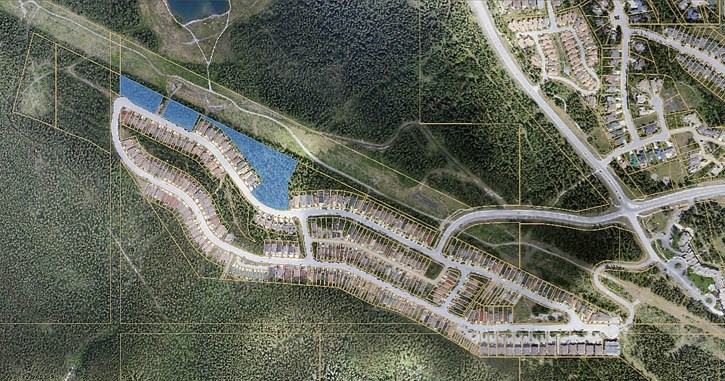One of the Peaks of Grassi property owners opposed to council’s decision to approve a rezoning bylaw in January has decided to challenge it in the Court of Queen’s Bench.
Calgary lawyer Mark Gruman, who also owns a second home in the Peaks neighbourhood, took legal action against the municipality earlier this month.
Specifically, Gruman wants a judicial review of the decision by council to rezone three parcels of land on Lawrence Grassi Ridge from urban reserve to residential. The change allows for up to 40 units of housing to be developed and included seven units of Perpetually Affordable Housing.
The legal arguments on the issue are expected to take up to a full day and time for that hearing was not available until fall. Gruman, however, also requested an injunction into the planning process for the property, which is currently being considered for subdivision.
That injunction application is scheduled for June 21 in Calgary after Gruman and Town of Canmore legal counsel Michael Assen agreed to make their arguments on that day.
“I am content to try and move this along as quickly as we can,” Gruman told Justice C.M. Jones. “I am an adjacent landowner, it is a residence in Canmore.
“Part of my application at this hearing is a stay of the bylaw pending hearing of the judicial review.”
Gruman said he is concerned that the four acres of land will see development proceed with “shovels in the ground” before a judicial review in October, or January could occur.
Assen called the application “wholly inappropriate” and an attack on the legislative authority of the municipality and its elected council.
“The materials before you do not reach the threshold for a judicial review,” he added.
Michael Fark, Town of Canmore general manager of municipal infrastructure, told court the subdivision authority is scheduled to hear the Peaks application on March 21. After that, there is still a development permit stage before a building permit can be applied for – all of which takes time to be processed.
While Gruman was concerned the application for a stay wouldn’t be heard in time before trees started to come down, Justice Jones said he was confident the June 21 date would be within the time it would take to reach that point.
However, Fark did point out that even under an urban reserve zoning, the landowners could clear the property of trees.
The lands are owned by three Peaks residents – Lawrence Hill, Pierre Doyon and Dan Madlung. They acquired the four acres from Three Sisters Mountain Village, which approached a number of local developers with the land for sale two years ago.
The owners had previously applied for rezoning and were denied by council last year – the proposed bylaw included two perpetually affordable housing units.
The second and successful bylaw included seven, as well as market affordable housing and secondary suites.
The Outlook was unable to obtain a copy of Gruman’s application at the courthouse detailing his legal arguments. However, part of the controversy surrounding the development application is a 1998 settlement agreement between the Town of Canmore and Three Sisters at that time. The agreement limited the number of units to be developed in the subdivision.
That settlement agreement was the result of a lengthy legal and development dispute between the municipality and the developer that reached the point of Canmore being granted leave to go to the Alberta Court of Appeal.
The agreement representing in writing settlement of a variety of issues including a residential cap in the development of pods seven and eight – as the area was known at the time by the Natural Resources Conservation Board.
The 1998 settlement states: “The Town and the developers agree that the gross developable area for pods seven and eight combined shall not exceed 45 acres and that the density of pods seven and eight combined shall not exceed 404 residential units; provided that in the event that the developers donate to the Town, or the Town’s nominee, lands within pods seven or eight for purposes of community housing then the lands donated and any residential units constructed theron shall not be counted when calculating the 45 acres and 404 residential units.”
See related story on page 25.




